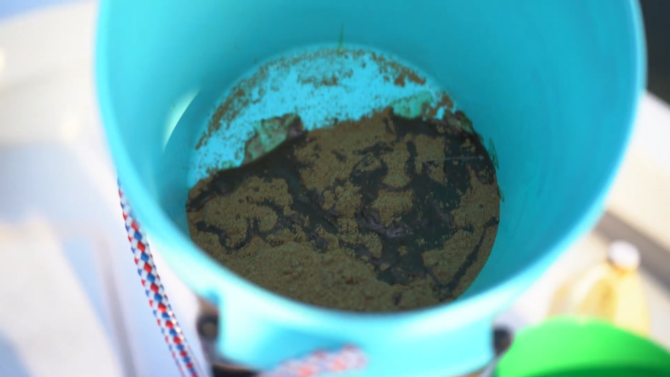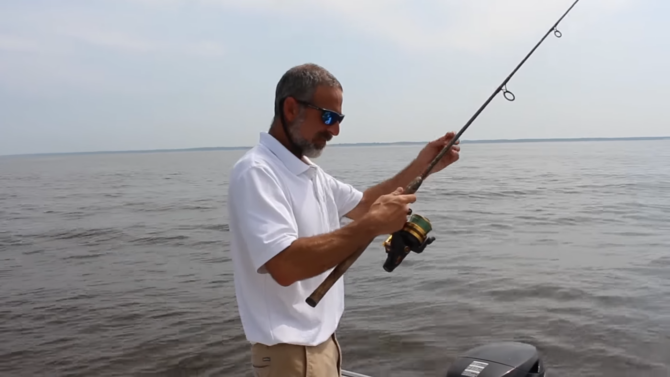Fishing techniques are mostly ancient, even though there are some modern variants. Chumming, which is easily among the most ancient ones, is one of those that simply can’t be surpassed. It all revolves around making the conditions for fish to gather in an area.
The most basic form includes making a stream of bait in the water. The result of these two actions will certainly help you increase your catch rate significantly.
The focus of the technique is to apply to the fish’s instincts, which helps them draw together by mimicking the presence of food.
While this may seem like a simple thing to do, some techniques can help.
Key Takeaways
1. Preparing the Chum

The foundation of effective chumming lies in the chum mix itself, which can vary based on the target species and fishing conditions. A popular and proven recipe involves a combination of Purina Tropical fish food, menhaden oil, and water.
This mix is known for its effectiveness in attracting a wide range of saltwater fish due to its potent scent and the oil’s ability to spread across a wide area in the water.
To prepare this chum, you’ll need a few essential tools: a bucket with a lid for mixing and storing the chum, a chum bucket for dispersing it in the water, and a cast net for catching live bait if desired.
The process begins by mixing approximately four handfuls of the Purina Tropical fish food powder with water in the bucket. The goal is to achieve a consistency that’s thick enough to stick together but will easily break apart in the water, creating a widespread scent trail.
Adding menhaden oil as the secret ingredient enhances the chum’s attractiveness, creating an irresistible scent for fish.
Making the Chum
Creating the perfect chum mixture is both an art and a science. Start by slowly adding water to the fish food powder, stirring continuously to avoid creating a mixture that’s too watery.
The ideal consistency resembles thick mud, allowing the chum to disperse effectively once it hits the water. The addition of menhaden oil is essential, as it provides a slick that can entice fish from an extra distance than the chum particles on my own.
Once mixed, the chum may be fashioned into small balls or patties that can be without problems thrown into the water. These need to be used strategically, relying on the cutting-edge and the intensity at which you’re fishing.
It’s important to hold the friend wet and protected while not in use, as publicity to air can dry it out and decrease its effectiveness.
2. Where and How to Chum

Choosing the right location for chumming is critical for success. Fish tend to congregate around structures such as bridges, rock piles, wrecks, and reefs, where natural food sources are abundant.
These areas provide excellent opportunities for chumming, as they already attract fish. The key is to enhance this natural attraction with your chum, drawing fish away from the structure and towards your bait.
When selecting a spot for chumming, consider the current and wind direction, especially in areas known for harboring some of the largest freshwater fish species in the world, such as catfish or sturgeon. Positioning your boat up current from the structure allows your chum to drift naturally toward the fish, increasing its effectiveness.
The technique of deploying chum is as important as the mixture itself. Start by assessing the tide and current conditions, as these will influence how your chum disperses in the water. If the tide is going out, anchor up the current of the bait and throw your chum towards the front of the boat.
For deeper water or stronger currents, consider using a chum bag or dispenser that can be anchored or tied off the stern of the boat. This method slowly releases chum into the water, creating a continuous scent trail.
3. Choosing the Right Bait

Once you’ve attracted fish with your chum, the next step is to present them with irresistible bait. While chumming can create a feeding frenzy, using the right bait can significantly increase your catch rate.
In such scenarios, the type of bait becomes less critical than its presentation and size. Live shrimp, frozen shrimp, artificial lures, chunks of pilchards, pinfish, threadfins, or mullet can all be effective, depending on the species you’re targeting.
The size of your bait can also play a vital position in the size of the fish you capture. Smaller chunks may additionally appeal to a larger variety of fish, but if you’re targeting larger specimens, using bigger bait portions can assist weed out smaller fish.
This method allows you to attention to exceptional over quantity, growing your chances of landing a trophy fish.
4. Rigging and Equipment
Proper rigging is essential for maximizing the effectiveness of your chumming efforts. A simple yet effective setup involves a split shot placed 3-4 inches above a 2/0 circle hook.
This arrangement keeps the bait in the desired position in the water column, reducing the likelihood of line twists and tangles. For added convenience, jig heads like the Bottom Sweeper or Mission Fishin’ can also be used, especially when targeting bottom-dwelling species.
Your choice of rod and reel should match the type of fishing you’re doing. A medium-heavy fast action rod paired with a 3000-size reel is sufficient for most inshore chumming scenarios. Finding a proper rod holder is equally important. If you don’t know where to look for these, visit Meltontackle.
This setup offers the sensitivity to detect bites and the strength to handle larger fish. When it comes to line, a combination of 10 lb. braid and 30 lb. leader strikes a good balance between stealth and durability, ensuring that you’re prepared for whatever takes your bait.
5. Advanced Methods

For anglers looking to refine their strategies, several advanced techniques can yield impressive results. In deep water or when fishing around complex structures, adjusting your approach can make a significant difference.
For instance, using heavier chum blocks or sinking bags can ensure that your pal reaches the desired intensity, attracting fish from the bottom up.
Targeting unique species like snapper and grouper requires a nuanced understanding of their conduct and possibilities. These fish are frequently more cautious, so developing a chum slick that mimics their natural food sources may be particularly powerful.
Experimenting with different mixtures and deployment methods can help identify what works best in your local waters.
The Bottom Line
Chumming is an effective approach that can dramatically increase your fishing achievement.
Ensuring your chum is proper, finding the proper bait, and using powerful deployment strategies, can help you with attracting as much fish as possible.






